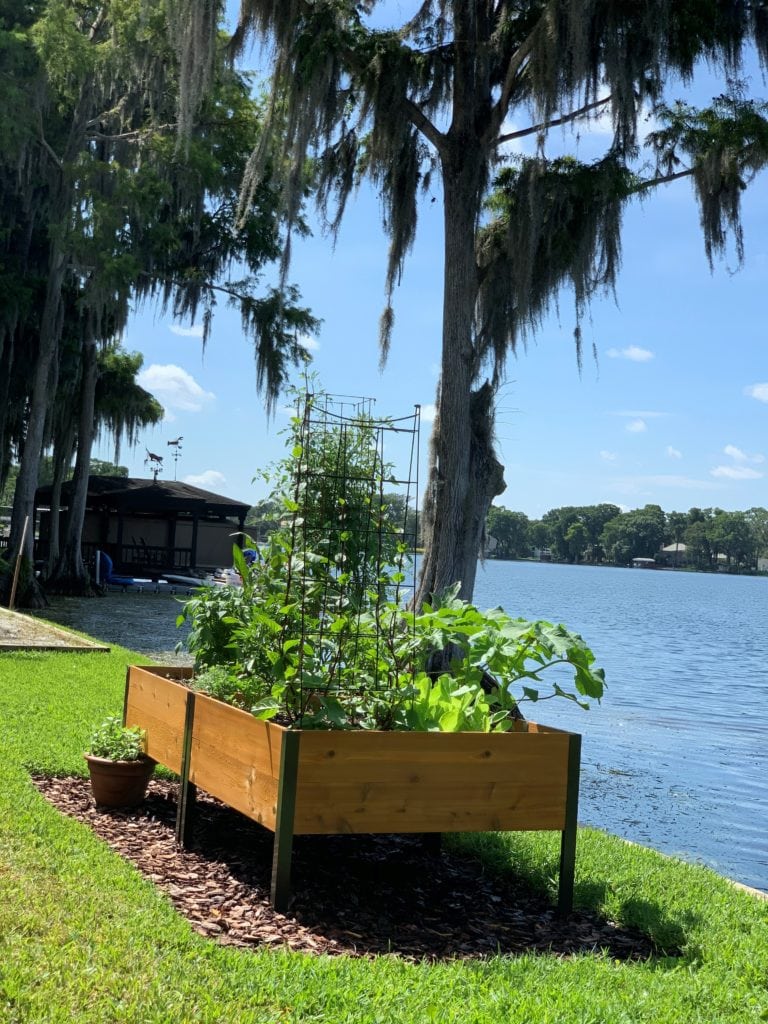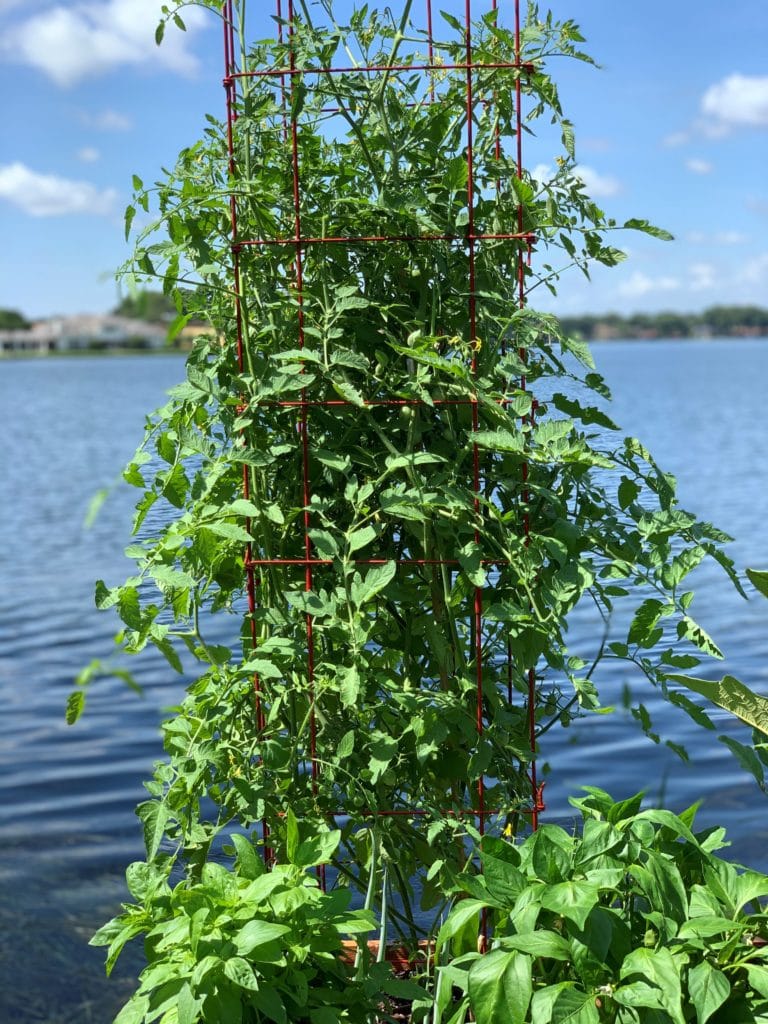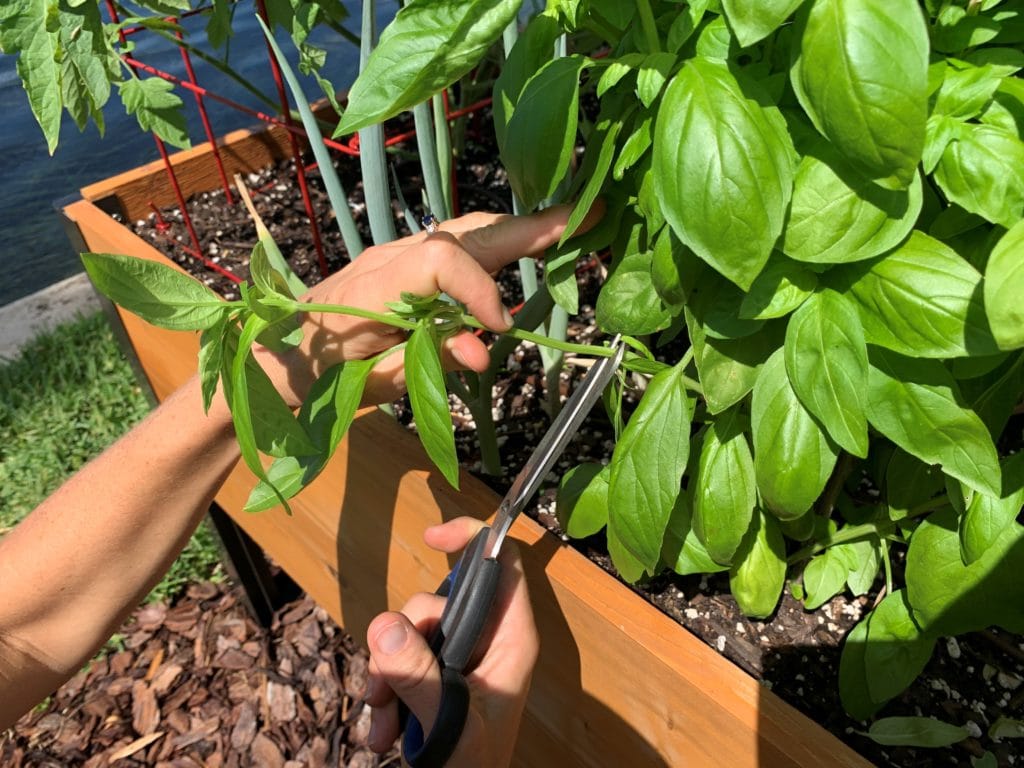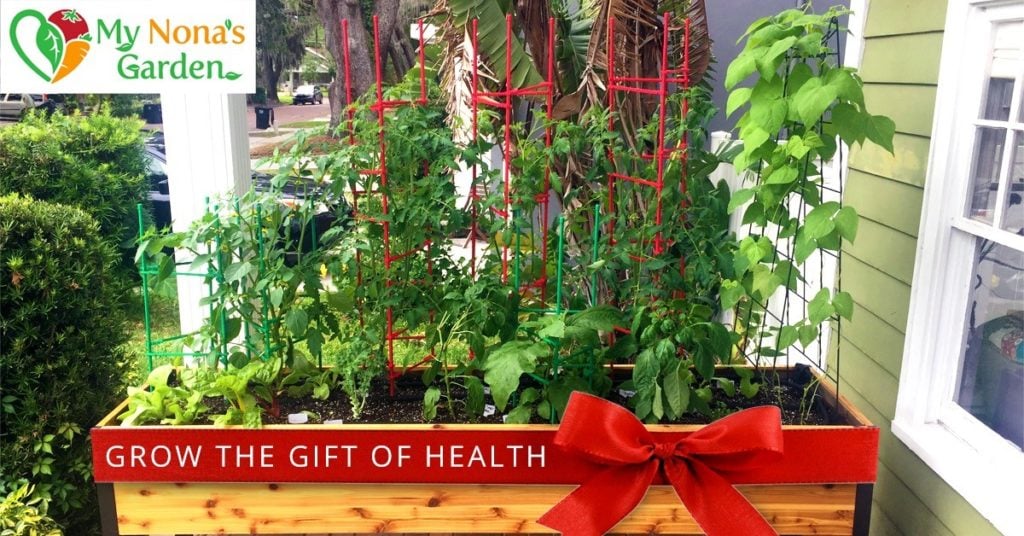
Are you ready to fall in love with your organic vegetable garden this season? It’s time to start thinking about preparing your vegetable garden. In order to garden organically, we need to allow the natural organic processes to occur in the garden. Primarily, we amend our gardens with nutrients, minerals, and good bacteria from many sources.
For example, you can purchase a standard, organic vegetable potting mix from the store since it’s challenging to grow in our sandy and sometimes clay-filled soil of Central Florida. It is necessary to add nutrients like nitrogen, phosphorus, and potassium; we typically get those nutrients balanced in a fertilizer. But that’s only half the battle. We still need additional nitrogen, micronutrients, and good bacteria found in compost and worm castings.

It is good to add different types of compost like aged cow and chicken manure or mushroom compost, just like the good old days. Once the compost is broken down or cooked, we add the compost to our potting mix and give it some time to break down and develop the structure of the soil. The soil has good structure when it contains a web of good bacteria and nutrients that work in harmony with the environment to feed our vegetable plants. This environment is developed over time. Then, in turn, a plant with the nutrients it needs will produce the most nutrient-dense, tasty vegetables for us.
If you want to get the most out of your garden this season, make sure that you take some time to do a little bit of planning.
Make a Garden Plan: Decide where to plant the garden and what to plant in it. Make sure your garden is getting six hours of direct sunlight. When you pick a spot, snap a picture while the sun is shining so you can see the surrounding shadows. Then, take another picture six hours later and make sure there are still no shadows on or close by the garden. In the winter months, add 10 feet to the length of shadows to account for the sun being lower in the sky. Use square foot gardening and companion planting guides to get the largest yield out of a small space. If you need any help with varieties and types of vegetables to plant in the fall, check out, https://www.sungoldgardens.com/seasonal-menu
Prepare Your Garden: Amend by removing 1/3 of last season’s potting mix and all plants that need to be replaced. A suggestion for a garden full of nutrients as well as a good tip for drainage is a mixture of 1/3 organic potting mix, 1/3 compost, and 1/3 perlite or vermiculite. Then, you can add an appropriate amount of organic fertilizer and worm castings and any other specific nutrients your garden may need. Be sure to mix well.
Make a Fertilizing Plan: As the plants grow taller, we need to continuously replenish the nitrogen and other nutrients in the soil. Nitrogen can be boosted with a side dressing of ground alfalfa or blood meal. Use as directed on packaging for organic fertilizers. To be cautious, I add about 50% of what is recommended on the instructions to the plants until I am comfortable with the fertilizer. As the plants mature, the garden is depleted of nutrients throughout the season. Even though we fertilize, it’s always best to refresh the garden before you plant the new season. I like to do fall planting in September. Different veggies can be planted at different times throughout September and October, depending on how heat tolerant they may be. Test your soil and see what nutrients you may need to boost during the season.

Special Treatment for Tomatoes: Tomatoes require acidic soil, so one week after transplanting, place a handful of organic coffee grounds in a circle around the base of each tomato plant. Rub it gently into the soil and water. Repeat every four weeks after. Use sparingly so the grounds do not burn the roots of the plants. When your tomatoes reach about two feet tall, clear the bottom six inches of the plant by cutting all side branches from the stem. This will reduce the chance of brown leaf spots spreading up the plant.
Make an Irrigation Plan: Set the garden to water every morning just before the sun hits. Ensure by mid afternoon that there is a dry layer on top of the garden. Allow this cycle to repeat to create a healthy amount of moisture for the plants.
Do Succession Planting: Reseed a few greens like lettuce and microgreens every two weeks to ensure a consistent yield. Reseed carrots and turnips every three to four months. Once succession plants have sprouted and have four leaves, thin the plants out to appropriate spacing. Each hole should have only one plant living in it. Simply snip extra sprouts to remove from the garden.

Pruning: When using the principles of square foot gardening, prune all plants to ensure they stay within their defined square footage throughout the season. Make sure to give tomatoes extra pruning when they pass the top of their cage.
Treating Pests: Address the underlying issue attracting the pests. Is it too little or too much moisture, sunlight or nutrients? Remove any visible pests and eggs from the plants, then spray them gently with a hose. Treat plants with neem oil spray for most pests. Only spray neem oil first thing in the morning or in the evening when the sun is not directly shining on the garden.
Happy fall gardening!

Amber Harom is the founder and president of Sungold Gardens, formerly My Nona’s Garden, where they install and service low-maintenance, elevated, organic vegetable gardens. If you want a lush, self-sustaining food supply but don’t have the time or know-how, we’ll build your dream garden and grow you delicious, nutrient-dense organic produce, right in your own yard or business location.
Visit www.SungoldGardens.com for more information
“We make organic vegetable gardening easy!”




